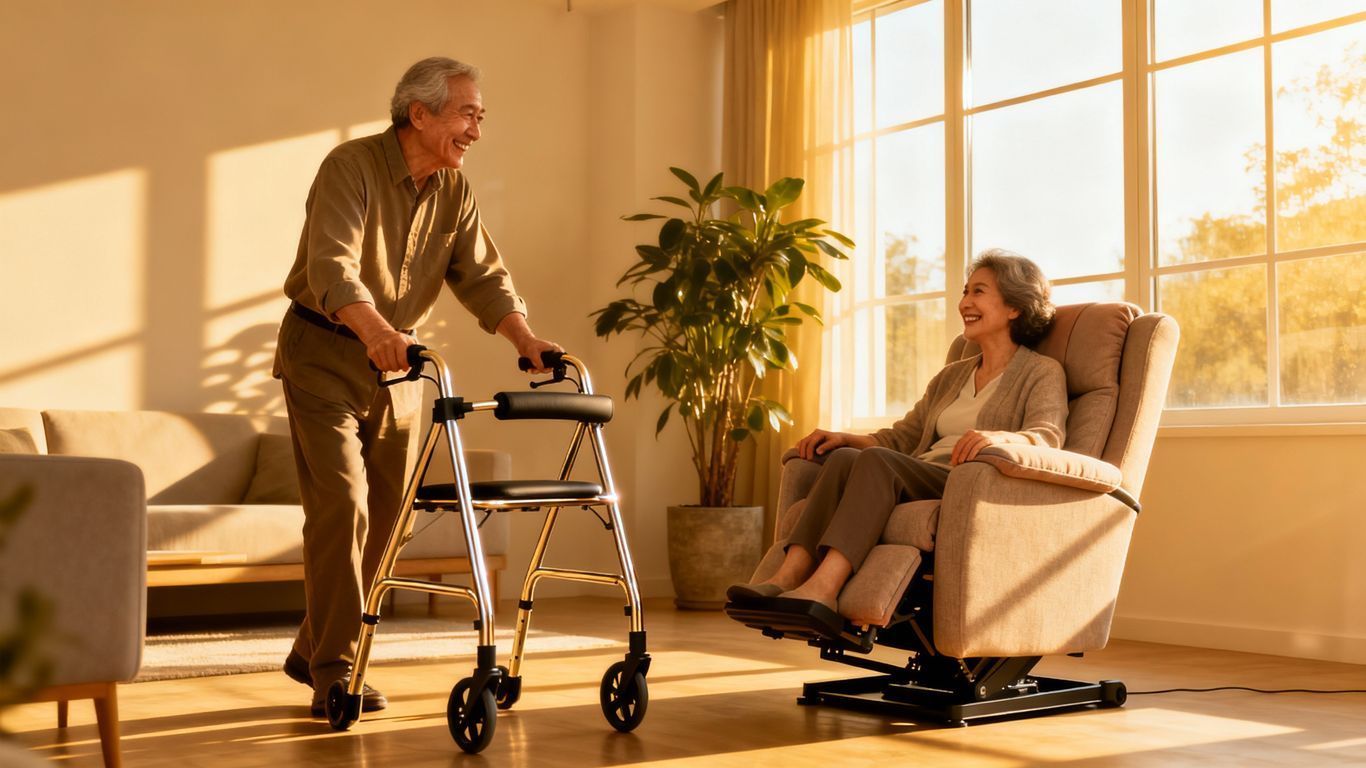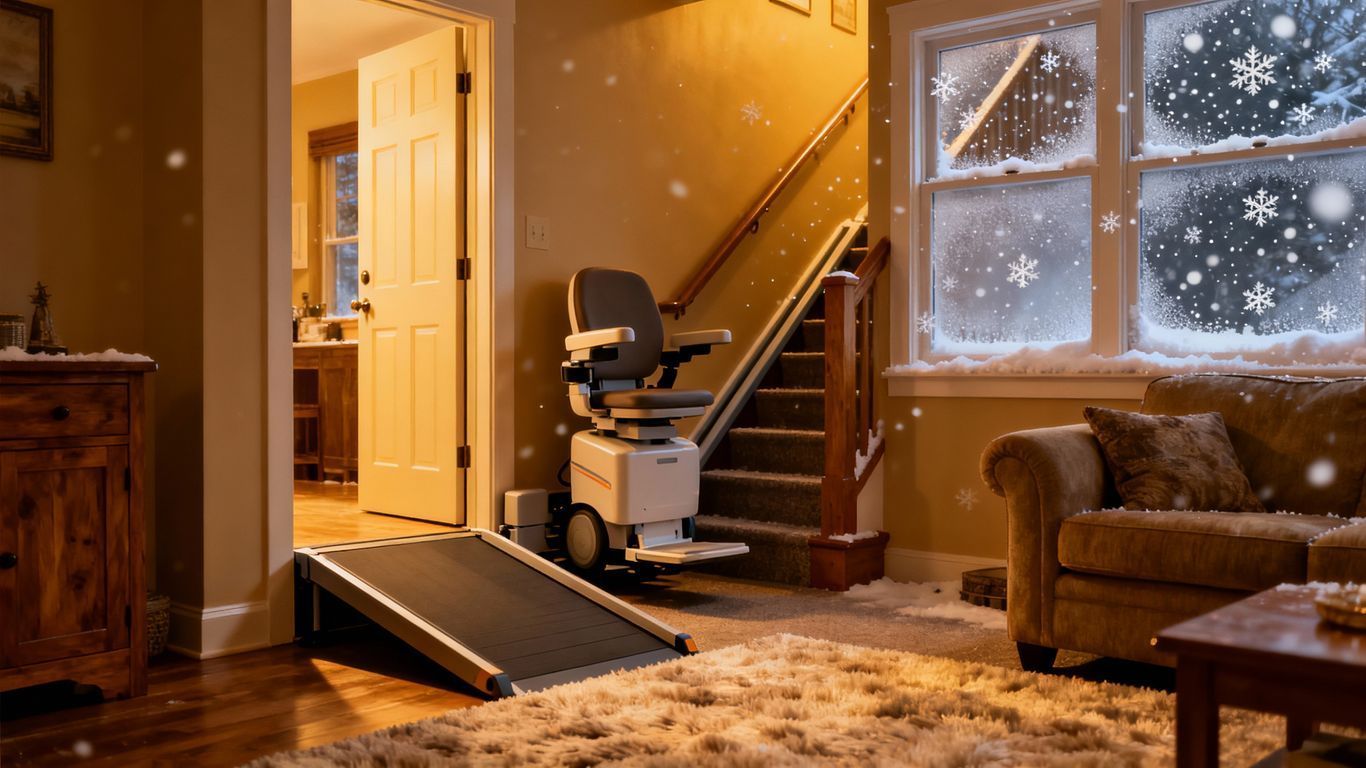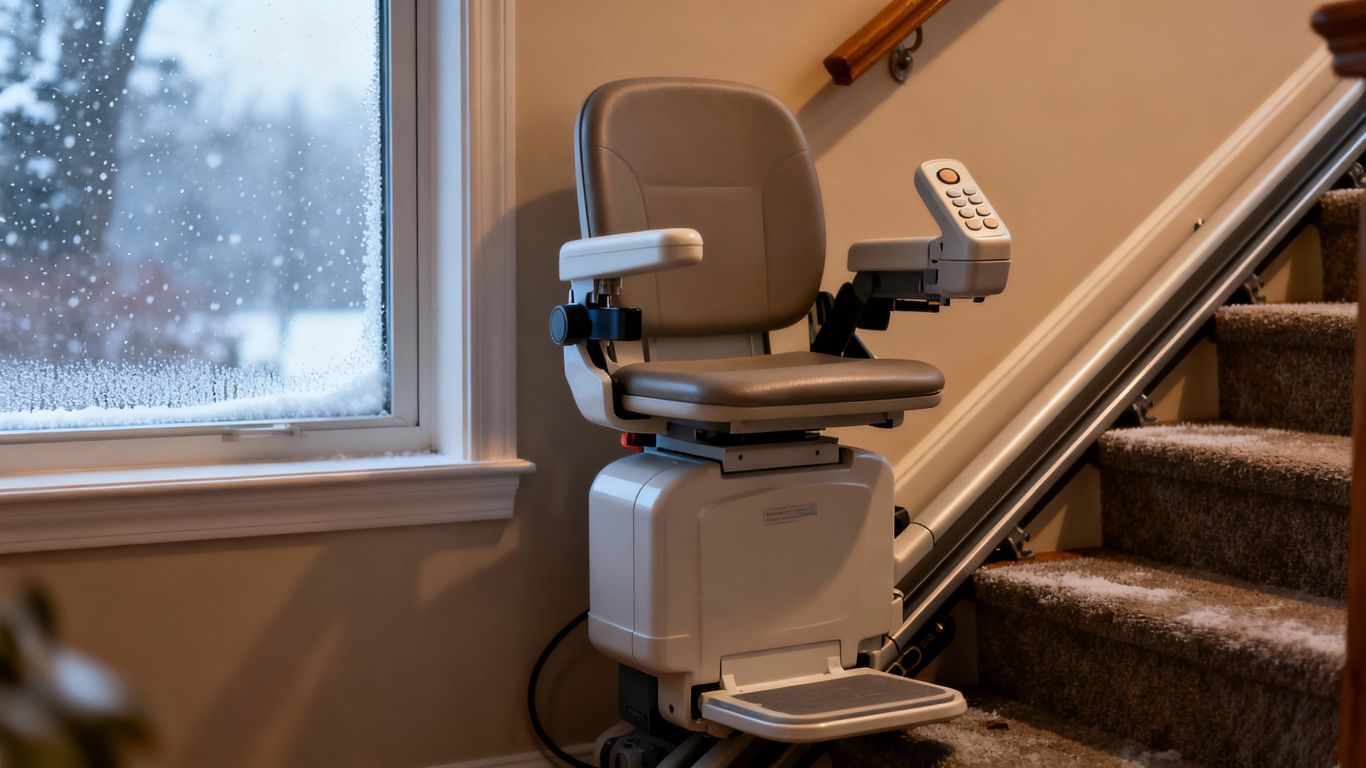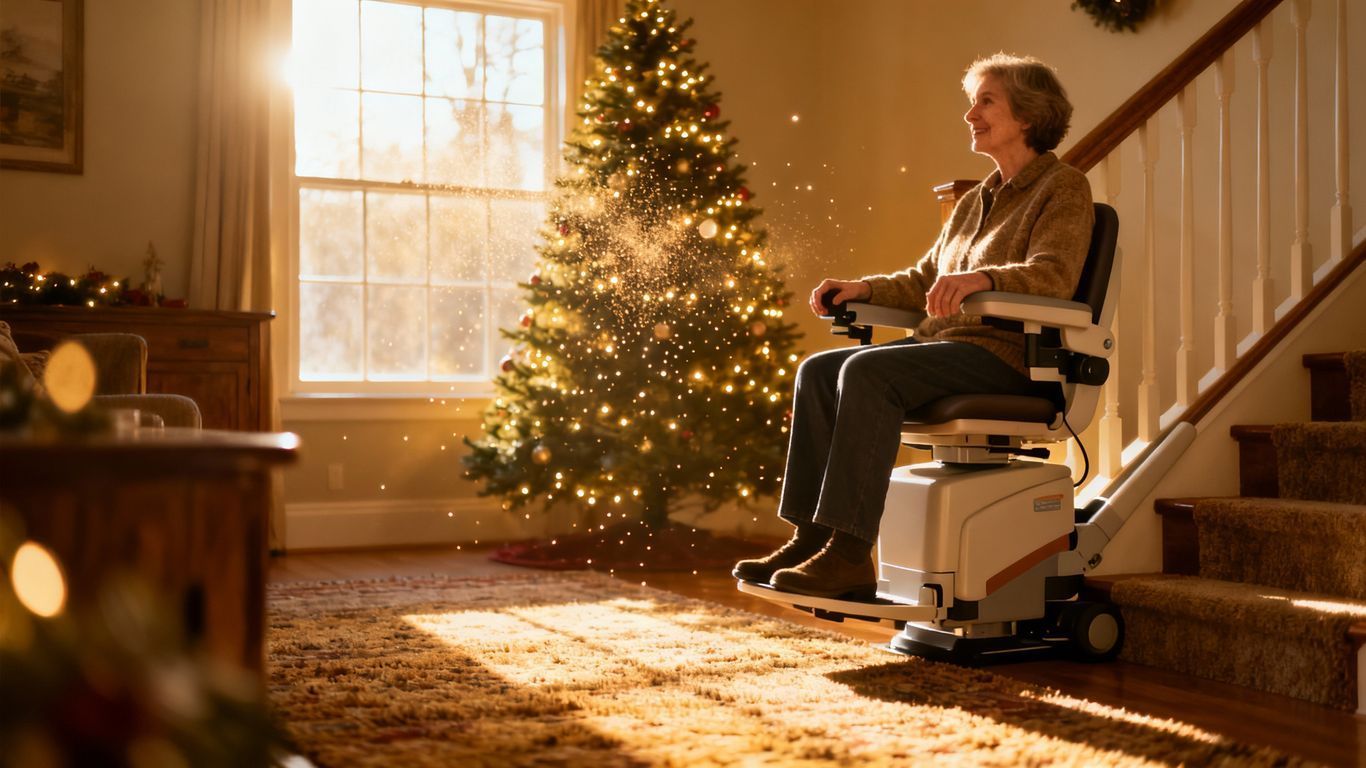Scooter vs. Power Wheelchair: Which Is Right for You in Ringgold, Ft. Oglethorpe & Surrounding Areas?
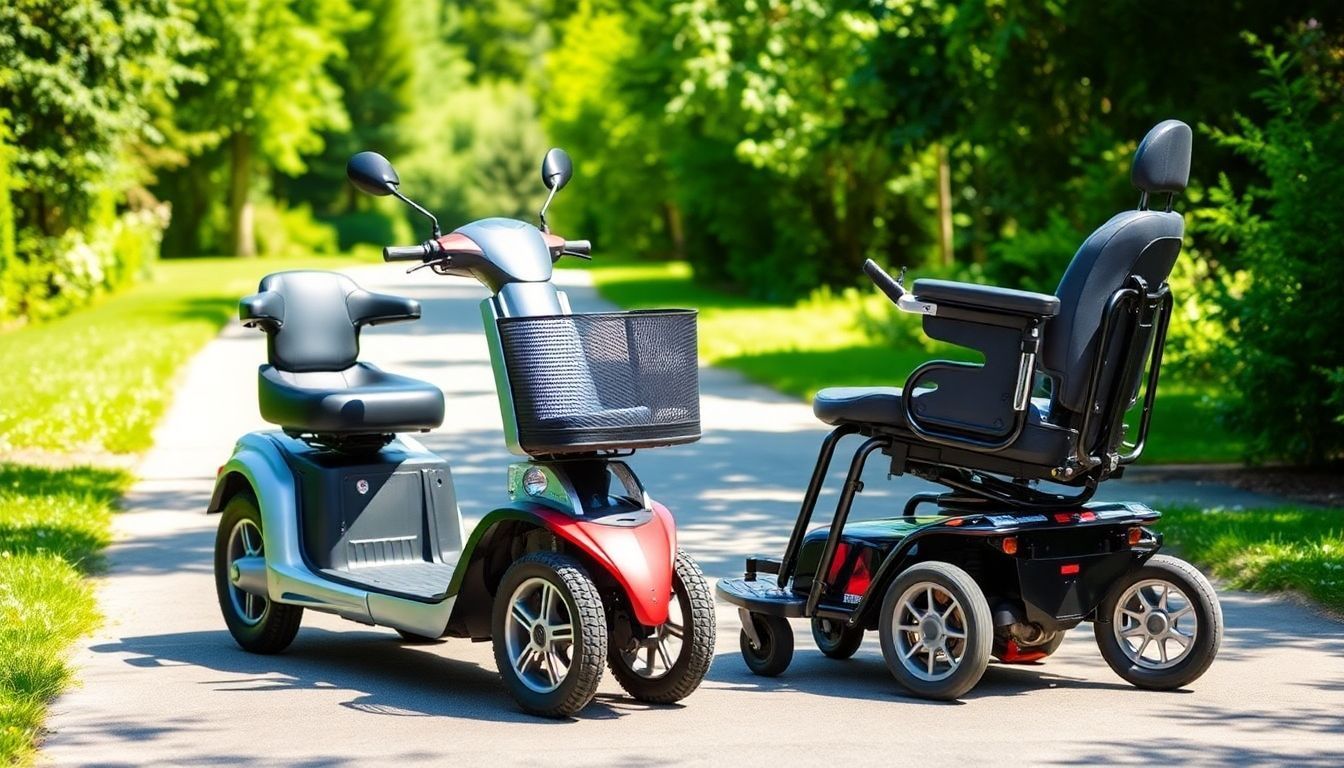
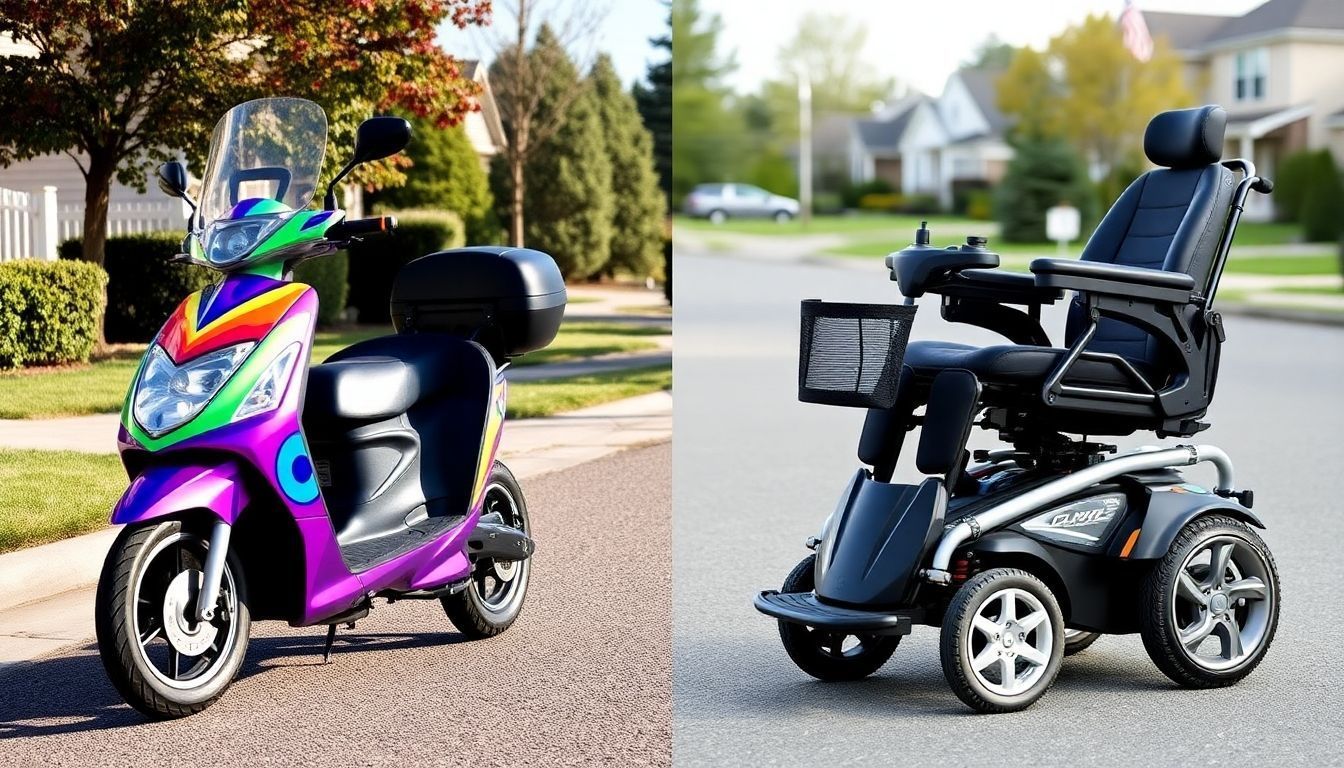
If you're in Ringgold, Ft. Oglethorpe, or nearby areas, you might be thinking about your mobility options. Choosing between a scooter and a power wheelchair can be a tough decision. Both have their perks and downsides, and understanding your needs can help you make the right choice. Let's break it down so you can find what works best for you.
Key Takeaways
- Scooters are generally more portable and easier to store.
- Power wheelchairs provide better stability and comfort for longer use.
- Consider your daily activities and physical limitations when choosing.
- Evaluate the terrain and accessibility of your environment.
- Check local resources and support services for mobility solutions.
Understanding Mobility Needs
Before you even start looking at scooters or power wheelchairs, it's really important to take a good, hard look at what you actually need. It's not just about getting from point A to point B; it's about how you live your life and what challenges you face every day. Let's break it down:
Assessing Your Daily Activities
Think about a typical day. What do you do? Do you mostly stay at home, or are you out and about a lot? Do you need to go to the grocery store, visit friends, or attend appointments? Knowing your routine helps determine what kind of mobility device will best fit your lifestyle. Consider these questions:
- How far do you usually travel in a day?
- What kind of surfaces do you encounter (pavement, grass, carpet)?
- How often do you need to transport the device in a car?
Evaluating Your Physical Limitations
This is a big one. Be honest with yourself about what you can and can't do. Can you walk short distances, or do you need assistance all the time? Do you have good upper body strength and coordination? Are there any specific physical conditions that might affect your ability to operate a scooter or power wheelchair? It's a good idea to consult your doctor if you're unsure.
- Consider your endurance levels.
- Think about your ability to transfer in and out of the device.
- Note any pain or discomfort you experience during movement.
Considering Your Environment
Where do you live? Is it a sprawling rural area or a compact urban setting? Are there hills, narrow doorways, or other obstacles that could make it difficult to maneuver a mobility device? Your environment plays a huge role in determining the right choice. For example:
- Indoor vs. outdoor use is a major factor.
- The size of your home and doorways matters.
- Accessibility of local businesses and public transportation is important.
It's easy to get caught up in the features and benefits of different devices, but the most important thing is to choose something that meets your individual needs and fits seamlessly into your daily life. Don't rush the process, and be sure to do your research.
Benefits Of Scooters
Portability and Storage
Scooters really shine when it comes to getting them from place to place and storing them. Unlike power wheelchairs, many scooters can be disassembled into smaller, lighter pieces. This makes them way easier to fit in the trunk of a car or store in a closet when you're not using them. Think about it: you can take your scooter on vacation without needing a special ramp or lift. Plus, if you live in an apartment with limited space, a scooter's smaller footprint is a huge advantage.
- Breaks down into manageable parts
- Fits in most car trunks
- Easy to store in small spaces
Speed and Range
Scooters often offer a good balance between speed and how far you can travel on a single charge. While they might not be as fast as some power wheelchairs, they're usually quick enough for running errands or getting around town. The range can vary depending on the model and battery size, but many scooters can go a decent distance before needing a recharge. This means you can enjoy more freedom and independence without constantly worrying about the battery dying. It's worth checking out the scooter ordinance in Chattanooga to see if there are any speed restrictions.
- Adequate speed for daily tasks
- Sufficient range for errands and outings
- Battery life varies by model
Cost-Effectiveness
One of the biggest draws of scooters is their price point. Generally, scooters are more affordable than power wheelchairs. This can make them a more accessible option for people on a budget. Plus, the maintenance costs for scooters are often lower, as they have fewer complex parts. This can save you money in the long run.
Scooters are a great option if you're looking for a mobility solution that won't break the bank. They offer a good balance of features and affordability, making them a popular choice for many people.
Advantages Of Power Wheelchairs
Enhanced Stability and Comfort
Power wheelchairs really shine when it comes to stability and comfort. They're built to provide a smoother, more secure ride, especially for individuals with limited upper body strength or those who experience fatigue easily. Think about it – no more struggling to push yourself around all day!
- Superior weight distribution
- Ergonomic seating options
- Reduced strain on joints
Power wheelchairs often come with features like adjustable armrests, headrests, and even tilt-in-space capabilities. These adjustments can significantly improve posture and reduce the risk of pressure sores, making them a great choice for people who spend a lot of time in their chair.
Customizable Features
One of the coolest things about power wheelchairs is how customizable they are. You can really tailor them to fit your specific needs and preferences. Need extra support? Want a specific type of control? No problem!
- Specialized seating systems
- Alternative control options (e.g., head arrays, sip-and-puff)
- Programmable driving modes
It's all about making the chair work for you, not the other way around. For those considering a transition, motorized wheelchairs offer a significant upgrade in user independence.
Better for Indoor Use
While scooters are okay indoors, power wheelchairs often have the edge, especially in tighter spaces. They're designed with maneuverability in mind, allowing you to navigate hallways, doorways, and other obstacles with greater ease.
- Smaller turning radius
- Intuitive controls
- Precise movements
Plus, many models come with features like adjustable speed settings, so you can move around safely and confidently in your home or other indoor environments.
Key Differences Between Scooters and Wheelchairs
Design and Structure
Scooters and power wheelchairs differ quite a bit in how they're built. Scooters usually have a tiller for steering and a seat that feels more like a chair. They often have three or four wheels. Power wheelchairs, on the other hand, are designed with a focus on support and maneuverability. They typically have a captain's chair-style seat and use a joystick for control. The base is usually four or six wheels, offering a more stable platform.
Control Mechanisms
How you control a scooter versus a power wheelchair is a big difference. Scooters almost always use a tiller. You push or pull on it to steer and control the speed. Power wheelchairs usually have a joystick. This allows for very precise movements, which is great for navigating tight spaces. Some power wheelchairs also have alternative control options, like head arrays or sip-and-puff systems, for people with limited mobility.
User Experience
The overall experience of using a scooter versus a power wheelchair is pretty different. Scooters often feel more like a recreational vehicle. They're good for getting around town or running errands. Power wheelchairs are designed more for people who need them for everyday mobility. They offer more support and can be customized to fit individual needs. Here's a quick rundown:
- Scooters: More freedom, less support.
- Power Wheelchairs: More support, greater maneuverability.
- Both: Offer increased independence compared to manual wheelchairs.
Choosing between a scooter and a power wheelchair really comes down to your specific needs and lifestyle. Think about where you'll be using it, how much support you need, and what kind of control system works best for you. It's a personal decision, and there's no one-size-fits-all answer.
Factors To Consider When Choosing
Choosing between a scooter and a power wheelchair isn't always easy. It really depends on your specific needs and lifestyle. Let's break down some key things to think about.
Terrain and Accessibility
Think about where you'll be using your mobility device the most. Will you be mostly indoors, outdoors, or a mix of both? This makes a big difference.
- Smooth, flat surfaces are ideal for scooters. They can handle sidewalks and paved paths pretty well.
- Power wheelchairs often have better maneuverability in tight spaces, making them great for indoor use.
- If you're dealing with rough terrain, grass, or gravel, a power wheelchair with the right tires and suspension is probably the better choice. Consider the required distance you'll be traveling.
Battery Life and Maintenance
Battery life is a big deal. You don't want to get stranded! Also, think about how much maintenance you're willing to do.
- Scooters generally have decent battery life for shorter trips, but it varies by model. Check the range before you buy.
- Power wheelchairs often have longer battery life, especially the higher-end models.
- Maintenance is something people often forget. Scooters might need tire replacements and occasional tune-ups. Power wheelchairs can have more complex maintenance needs, including battery replacements and motor repairs.
Weight Capacity and Size
Weight capacity is crucial for safety and performance. Make sure the device can handle your weight comfortably. Size also matters, especially if you have limited storage space or need to navigate narrow doorways.
- Check the weight capacity of both scooters and power wheelchairs. Don't exceed the limit!
- Consider the overall size of the device. Will it fit through doorways in your home? Can you easily transport it in your vehicle?
- Think about storage. Where will you keep the scooter or power wheelchair when you're not using it?
It's a good idea to measure doorways and storage spaces before making a decision. This will help you avoid any unpleasant surprises later on. Also, consider how easy it is to disassemble or fold the device for transport.
Local Resources For Mobility Solutions
Mobility Equipment Suppliers
Finding the right mobility equipment can feel overwhelming, but luckily, there are places around Ringgold and Ft. Oglethorpe that can help. These suppliers often have trained staff who can assess your needs and recommend the best scooter or power wheelchair for you.
- Check local medical supply stores. They usually carry a range of mobility devices.
- Look for dealers specializing in mobility equipment. They might have more options and expertise.
- Don't forget to ask about warranties and service agreements. It's important to know what's covered if something goes wrong.
Rental Options in Ringgold and Ft. Oglethorpe
Sometimes, you only need a scooter or power wheelchair temporarily. Maybe you're recovering from surgery or have a visitor with mobility issues. Renting can be a great solution.
- Contact local pharmacies. Some offer rentals of mobility equipment.
- Search online for medical equipment rental companies in the area.
- Ask about daily, weekly, and monthly rental rates to find the most cost-effective option.
Renting can also be a good way to try out different models before committing to a purchase. This allows you to see what features you like and what works best for your lifestyle.
Community Support Services
Beyond just buying or renting equipment, there are community services that can provide support and resources. These services can help you find emergency payment services if you need it.
- Check with local senior centers. They often have information about mobility resources.
- Contact disability organizations in the area. They can provide guidance and support.
- Look for government programs that offer assistance with mobility equipment. These programs can sometimes help with funding or provide access to equipment.
Personal Experiences and Testimonials
User Stories from the Community
It's one thing to read about scooters and power wheelchairs, but it's another to hear from people who actually use them every day. We talked to several residents in Ringgold and Ft. Oglethorpe about their experiences.
- Mary S., a retired teacher, shared how her scooter has allowed her to regain her independence after a knee replacement. She can now easily visit the local park and run errands without relying on others.
- John B., who uses a power wheelchair due to multiple sclerosis, emphasized the importance of finding a chair that fits his specific needs. He highlighted the customizable features that allow him to maintain a comfortable posture throughout the day.
- Sarah L., a young adult with cerebral palsy, talked about how her power wheelchair has opened up new opportunities for her, including attending college classes and participating in community events. She loves the freedom it gives her.
Comparative Reviews
Choosing between a scooter and a power wheelchair can be tough. Here's a quick comparison based on user feedback:
- Scooters are often praised for their portability and ease of use, making them ideal for short trips and navigating crowded spaces.
- Power wheelchairs, on the other hand, are generally considered more comfortable and stable, especially for individuals with significant mobility limitations.
- Many users also point out the importance of considering battery life and maintenance requirements when making a decision.
Ultimately, the best choice depends on your individual needs and preferences. It's a good idea to try out both types of devices before making a final decision.
Expert Opinions
We also consulted with local mobility experts to get their insights on the scooter vs. power wheelchair debate. According to them, it's crucial to consider the following factors:
- The type of terrain you'll be navigating. Scooters may struggle on uneven surfaces, while power wheelchairs are better equipped to handle rough terrain.
- Your level of physical strength and endurance. Power wheelchairs require less physical exertion than scooters, making them a better option for individuals with limited upper body strength.
- Your budget. Scooters are generally less expensive than power wheelchairs, but the cost can vary depending on the features and accessories you choose.
In this section, we share real stories and feedback from people just like you. Their experiences show how our services have made a difference in their lives. If you want to learn more or share your own story, visit our website today!
Final Thoughts
Choosing between a scooter and a power wheelchair really comes down to your personal needs and lifestyle. If you’re looking for something that’s easy to maneuver and can handle short trips, a scooter might be the way to go. But if you need something more robust for daily use or longer distances, a power wheelchair could be better. Think about where you’ll be using it most—inside your home, around town, or both? Also, consider how much support you need and what fits your budget. In the end, it’s all about finding what works best for you in Ringgold, Ft. Oglethorpe, and the surrounding areas.
Frequently Asked Questions
What is the main difference between a scooter and a power wheelchair?
The main difference is in how they are designed and used. Scooters are usually more portable and can be easier to store, while power wheelchairs offer better stability and comfort.
Which option is better for outdoor use?
Scooters are often better for outdoor use because they can go faster and handle rougher terrain. However, power wheelchairs can also work well depending on the model.
Are scooters more affordable than power wheelchairs?
In general, scooters tend to be less expensive than power wheelchairs. However, prices can vary based on features and brands.
Can I use a scooter indoors?
Yes, you can use a scooter indoors, but it may be harder to maneuver in tight spaces compared to a power wheelchair.
What should I consider when choosing between a scooter and a power wheelchair?
Think about where you will use it most, your physical needs, and how much weight it can carry.
Are there places in Ringgold and Ft. Oglethorpe to rent mobility devices?
Yes, there are local suppliers and rental services in Ringgold and Ft. Oglethorpe that offer both scooters and power wheelchairs.

